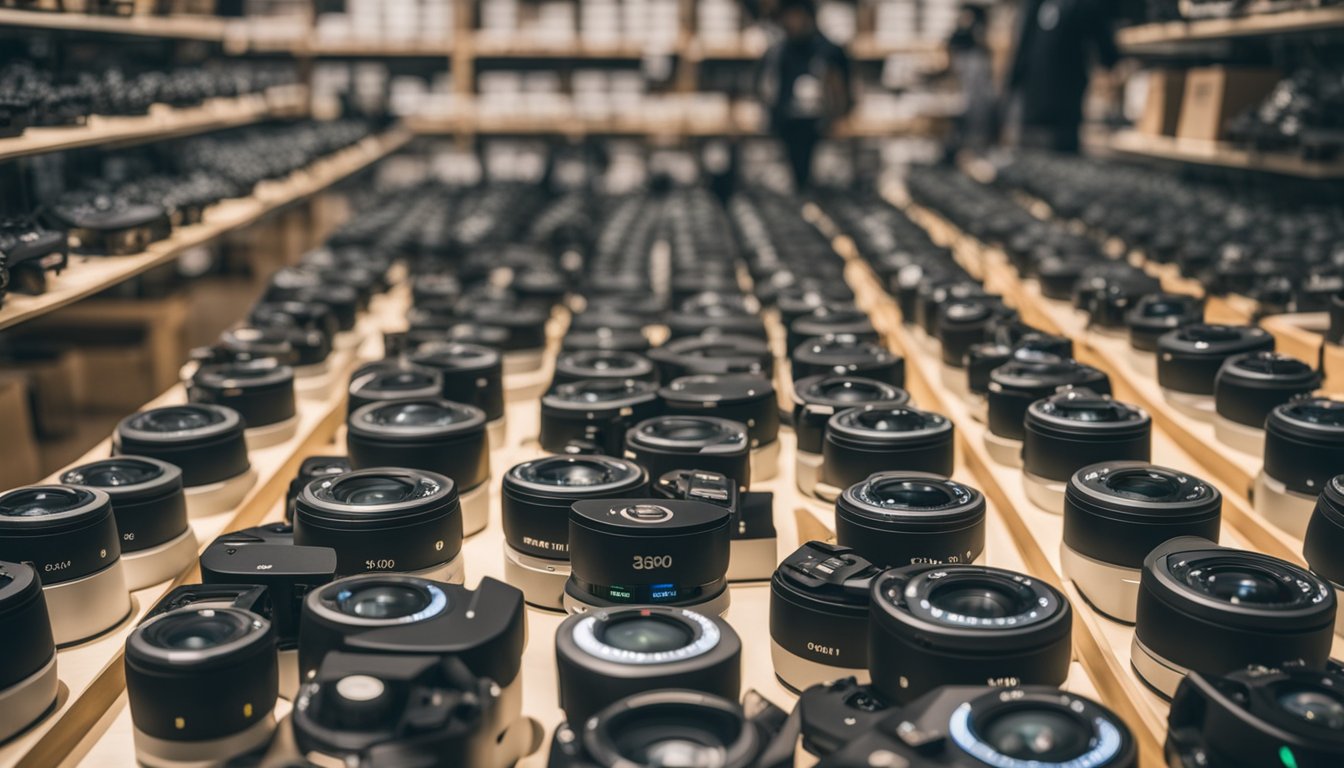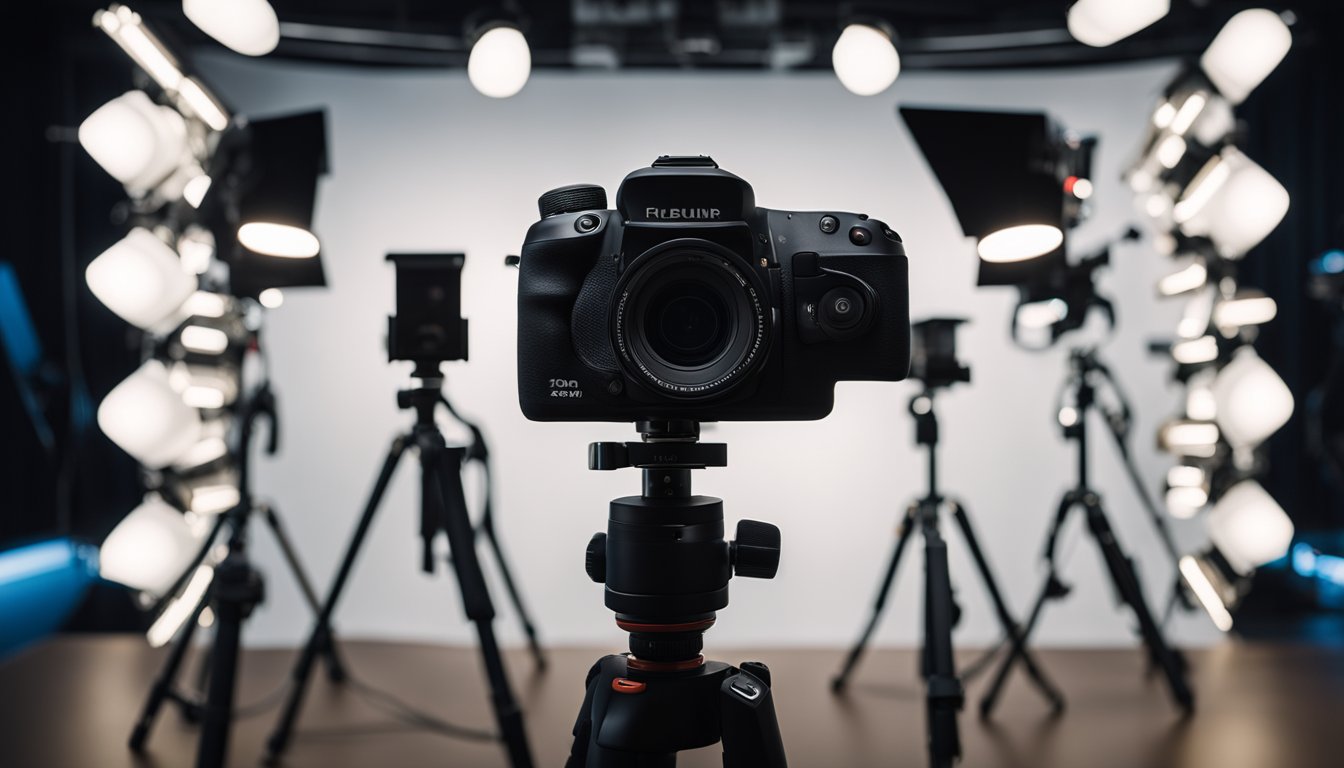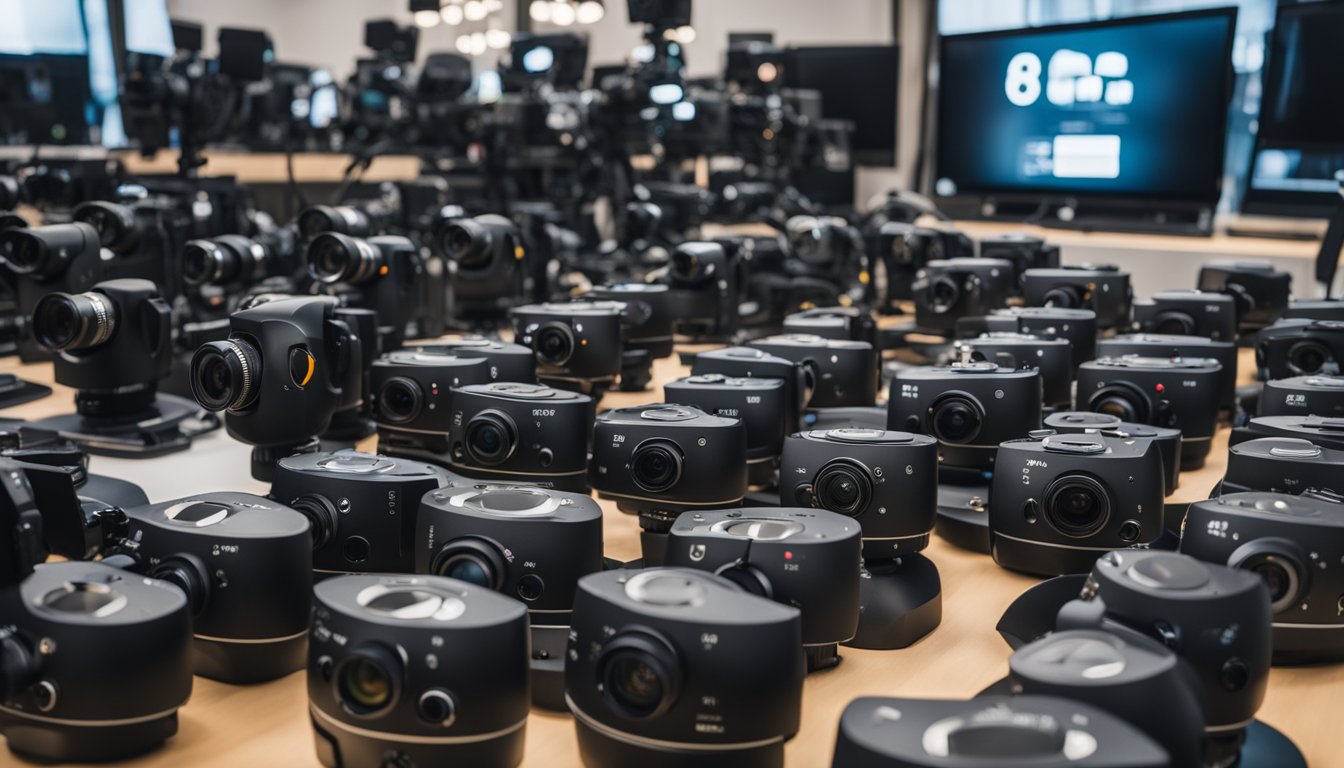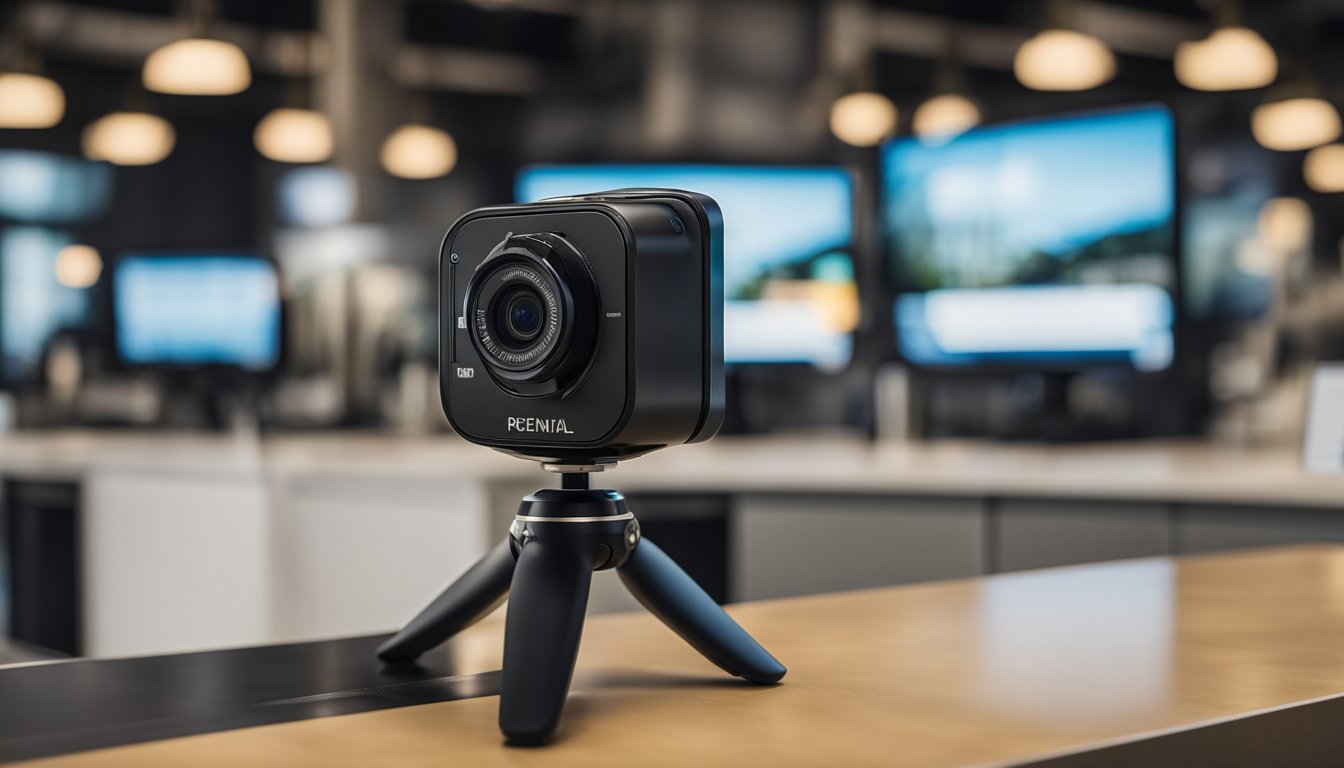In the ever-evolving landscape of photography and videography, 360 cameras have emerged as a game-changer, offering immersive views and interactive experiences. As the demand for such content grows, the availability of 360 cameras for rent opens up possibilities for both professionals and enthusiasts eager to explore this technology without committing to a purchase. Renting a 360 camera can provide the opportunity to capture life from all angles, whether for a special event, a virtual reality project, or just for fun.
Navigating the world of 360 cameras can seem daunting at first, but with rental options, you have the flexibility to test different models and find the one that fits your needs. From understanding the necessary technical considerations to comparing various camera models, renting allows you to get a hands-on experience. Preparation is key; knowing what accessories and add-ons may be required for your project will ensure you get the most out of your rental. Moreover, familiarizing yourself with the software and editing tools specific to 360 video production will help in achieving the desired outcome for your creative ventures.
Key Takeaways
- Renting 360 cameras gives you the flexibility to experiment with cutting-edge technology.
- Understanding technical details and camera capabilities enhances the rental experience.
- Knowing rental policies and what’s needed for your project ensures a successful shoot.
Understanding 360 Cameras
https://www.youtube.com/watch?v=DKsFk5dNcuQ&embed=true
When you’re looking into renting a 360 camera, it’s valuable to know what types are available and the key features that can help bring your creative vision to life. Now, let’s dive deeper into the kinds of 360 cameras you might encounter and the innovative technologies they employ.
Types of 360 Cameras
360 cameras come in various shapes and sizes, designed for both amateur videographers and professional filmmakers. Generally, these cameras fall into two broad categories:
- Consumer 360 Cameras: These are compact, portable, and generally more affordable, making them perfect for casual use, travel vlogging, or social media content. Most function with a dual fisheye lens system to achieve a full 360-degree capture.
- Professional 360 Cameras: For those requiring the highest quality, such as in film production or sophisticated VR development, professional 360 cameras provide enhanced features like multiple lenses, higher 4K or 8K resolution, and advanced stitching capabilities to create seamless spherical VR experiences.
Key Features and Technologies
The functionality of a 360 camera hinges on its features and the technology that powers it. Here are some key aspects you should be aware of:

- Lenses: Typically, a 360 camera will have two or more fisheye lenses that cover wide angles of view. These lenses capture everything around the camera, which is then stitched together to form a cohesive 360-degree image or video.
- Resolution: Higher resolutions like 4K or 8K matter significantly in 360 cameras, as they maintain image clarity even when stretched across a spherical VR canvas.
- Stitching: This is the process where separate images from different lenses are merged into a single, unified 360-degree view. Good stitching is critical for an immersive experience, so look for cameras that handle this process effectively.
- Gyro and Stabilization: A gyro helps with stabilization, ensuring that your shots are smooth and not affected by unwanted shakes or movements—quite essential for VR content.
- HDR Mode: Some cameras come with an HDR mode, which helps capture a more dynamic range, making your footage richer in color and contrast.
With a grasp on these types and features, you’ll be better equipped to choose the right 360 camera for your rental needs.
Comparing 360 Camera Models
https://www.youtube.com/watch?v=-kMUDnAJpgE&embed=true
When you’re considering a rental, the choice between consumer and professional 360 cameras can greatly impact your experience. Different brands and models offer various features that cater to either casual shooting or professional-grade production.
Consumer vs. Professional 360 Cameras
Consumer 360 Cameras:
- Pros: User-friendly; Lower cost; Compact design
- Cons: Lower image and video quality compared to professional models
Professional 360 Cameras:
- Pros: High-resolution output; Advanced features; Greater control over settings
- Cons: Higher cost; More complex to operate
« How Much Does a 360 Camera Rental Cost? Unveiling the Prices
Best 360 Camera Booths: Elevate Your Event with Top Picks »
Popular Consumer Models:
- GoPro Max: Offers a balance of quality and ease of use
- Insta360 One R Twin Edition: Versatile with interchangeable lens modules
Notable Professional Models:
- Insta360 Pro 2: Known for its 8K video capabilities
- Insta360 Titan: Exceptional with its 11K cinematic quality for VR content
Top Brands and Models
When it comes to the top brands for 360 cameras, you’ll find that GoPro and Insta360 have a variety of options straddling both consumer preferences and professional demands.
-
GoPro: Renowned for action cams that are tough and reliable.
- GoPro Max stands out with its user-friendly interface and sturdy build.
-
Insta360:
- Insta360 One R Twin Edition caters to those seeking modularity with a 360 option.
- For a leap towards professional VR camera performance, consider the Insta360 Pro 2 or the Titan, each boasting a spherical VR 360 that can produce 8K and 11K quality respectively.
-
DJI:
- DJI models are typically seen as versatile and intuitive, providing you a great mix of quality and usability.
In summary, your choice in a 360 camera should reflect your intentions—whether that’s to casually capture life’s moments or to produce immersive, high-quality VR content. Consider the brands and models, weigh the pros and cons, and pick the camera that best aligns with your project requirements and expertise.
Renting vs. Buying 360 Cameras
https://www.youtube.com/watch?v=O4gCziyEAwk&embed=true
When you’re looking to capture immersive videos or photos, a 360 camera can be a fantastic tool. Deciding whether to rent or buy a 360 camera depends on several factors such as cost, frequency of use, and the desire for the latest technology.
Cost Analysis
Renting:
- Short-Term Costs: You can expect to pay anywhere from $550 to $3500 for a full occasion rental, or around $200 per hour, which typically includes the camera and all necessary accessories.
- Long-Term Costs: If you plan on using a 360 camera frequently, the rental fees can add up, potentially surpassing the purchase price.
Buying:
- Initial Costs: The upfront cost of purchasing a new 360 camera can be significant but is a one-time investment.
- Maintenance and Upgrades: Owning a camera also means budgeting for maintenance and potential upgrades, which adds to the long-term investment.
Pros and Cons
Renting Pros:
- Access to a variety of the latest 360 cameras without the commitment of a purchase.
- No worries about maintenance, depreciation, or outdated technology.
Renting Cons:
- Over time, frequent rentals can become more expensive than ownership.
- Limited customization and the need to adapt to different models each time.
Buying Pros:
- Full control and customization of your camera setup.
- Always available for immediate use without the need for planning ahead.
Buying Cons:
- Higher upfront costs.
- Responsibility for all repairs, maintenance, and eventual obsolescence.
The decision between renting or buying a 360 camera boils down to your specific needs, budget, and how often you anticipate using the technology.
Preparation for 360 Camera Rental
Before you rent a 360 camera for your upcoming project, there are a few things to consider to ensure a smooth experience. Your preparation will set the foundation for the success of your production.
Checklist for Camera Rental:
-
Determine your rental duration and needs
- How long will you need the camera?
- What kind of event or project is it for?
-
Decide on the type of 360 camera
- Are you capturing stills, videos, or both?
- Do you require high-resolution, such as 8K for your content?
-
Support Equipment
- Will you need camera rigs or stabilizers?
- Do you require tripods or other mounting solutions?
-
Power Requirements
- How long will you be shooting?
- Check for cameras with long battery life or get extra batteries.
-
Storage Considerations
- Ensure you have sufficient memory cards or internal storage.
- Confirm file sizes and formats to manage data efficiently.
-
Connectivity Needs
- What kind of cables or wireless connections do you need?
- Are you live streaming or transferring data post-shoot?
-
Additional Services
- Look into companies providing on-site support.
- Consider pre-load services for VR content if applicable.
Remember, not all 360 cameras cover a full 360 degrees. Confirm the viewing angle and any additional features you may need for your unique project, like water resistance or live streaming capabilities. This proactive approach will help make your event or production go off without a hitch.
Technical Considerations for 360 Cameras
https://www.youtube.com/watch?v=dHJHRRHQrDQ&embed=true
When renting a 360 camera, it’s important to consider the technical details that will affect your final footage. Here, you’ll learn about resolution, field of view, stabilization, and image quality, which are crucial for capturing high-quality immersive videos and photographs.
Resolution and Field of View
Resolution is a key factor in the clarity and detail of your 360 videos and photos. Many contemporary 360 cameras offer 4K video resolution, ensuring that the images you capture are crisp and vibrant. Remember that a higher resolution will typically give you more flexibility in post-production, like zooming and cropping, without significant quality loss.
In terms of field of view, most 360 cameras boast a very wide angle lens that can capture a full spherical image, some up to an effective 360-degree view. This means you’ll get every angle covered, which is essential for immersive experiences. However, be aware that some models may advertise 360 degrees but only provide a 240-degree view.
Stabilization and Image Quality
Image stabilization is another critical aspect, especially if you will be moving around with your camera. Look for cameras with built-in image stabilization technology such as FlowState stabilization, which can help to keep your shots steady and reduce the shakiness that typically comes with handheld recording.
For image quality beyond resolution, consider if the camera supports HDR (High Dynamic Range), which can greatly enhance the footage by improving the contrast and color range. Additionally, advanced features like the ability to shoot in LOG or RAW photo formats can provide higher quality images and more control in post-production. These formats retain more detail and allow for greater manipulation when editing, but they also require more storage and post-production work.
The bit rate at which the camera records data is also an important consideration. A higher bit rate generally means better video quality because it captures more data from each frame, but it also means larger file sizes. Choose a balance that suits your needs for quality and storage capacity.
By paying attention to these technical specifications, you’ll be able to choose a 360 camera rental that meets the demands of your project and helps you produce professional-quality immersive content.
Audio and Video Capabilities
https://www.youtube.com/watch?v=OgtRhISWn_o&embed=true
When looking for a 360 camera to rent, you’ll want to make sure that your choice has the capability to capture immersive audio to complement the high-definition video. Let’s take a closer look at the technical aspects to help you make an informed decision.
Capturing High-Quality Audio
360-degree cameras typically offer advanced audio recording features, such as ambisonics audio, which is essential for creating a realistic sound experience that matches the visual content. Some cameras have built-in microphones that can capture sound from all directions, while others may support external microphones. For top-notch audio quality, consider cameras that are compatible with professional-grade mics like Sennheiser, known for their precise sound reproduction in 360-degree environments.
Video Formats and Compression
Your recordings will often be in the versatile MP4 format, which strikes a balance between quality and file size — an important consideration when dealing with high-resolution video. Look for cameras that offer different levels of compression options, allowing you to choose between higher-quality files or more manageable file sizes. The right camera will let you capture every angle in crisp detail without excessive storage requirements.
Accessories and Add-Ons
When you rent a 360 camera, selecting the right accessories and add-ons can enhance your filming experience significantly. These extras help ensure that you have all you need for a smooth shooting session, whether you’re a hobbyist or a seasoned professional.
Essential Accessories for Renting
- Lighting: Proper lighting is crucial for capturing high-quality 360 footage. You can opt for LED panels that provide a consistent light source.
- Power Solutions: Don’t get caught without power. Look for the Insta360 PT854291-2S Pro Battery Pack and extra AC adapters to keep your camera running longer.
- Media Storage: A 128GB media bundle is often sufficient for most shoots, allowing you to store plenty of high-resolution video before needing to offload footage.
- Connectivity: Ensure the camera includes WiFi and Bluetooth capabilities for easy control and data transfer.
| Accessory Type | Description | Importance |
|---|---|---|
| Lighting | Enhance scene brightness and quality. | Essential |
| Power Solutions | Battery packs and adapters for longevity. | Essential |
| Media Storage | 128GB cards for ample storage space. | Essential |
| Connectivity | WiFi and Bluetooth for data and control. | Highly Useful |
Advanced Add-Ons for Professionals
- Premium Kits: These often come with a variety of lenses and additional gear tailored for high-end production needs.
- Charging Stations: A dedicated charging station, like a USB 3.0 hub, can be a time-saver for quick and efficient battery management.
- VR Headsets: To preview your immersive content accurately, consider renting VR headsets to get a true sense of the viewer’s perspective.
| Add-On Type | Description | Use Case |
|---|---|---|
| Premium Kits | High-grade lenses and gear for professional shoots. | Advanced Production |
| Charging Stations | Efficiently manage and charge multiple batteries. | Time-saving Charging |
| VR Headsets | Preview and experience 360 content as intended. | Previewing Footage |
Remember, accessories can make or break your 360 video project, so choose wisely based on the demands of your shoot.
Software and Editing
https://www.youtube.com/watch?v=XgxW7y3Wh4g&embed=true
When you rent a 360° camera system, you’ll need the right software tools to stitch and edit your spherical VR and 3D video content. Whether you’re working on a Mac, PC, iOS, or Android platform, there’s software available to handle your post-production needs.
Stitching Software
Stitching is a crucial part of producing seamless 360° videos. Companies like HTR offer complete professional studio production computers with the necessary software tools for stitching. This can save you a significant amount of time and ensure a professional finish. If you’re not as familiar with stitching, some services offer to handle the stitching for you post-capture, ensuring that even beginners can achieve polished results.
Editing on Different Platforms
For editing your 360° videos, the platform you use can dictate the software available to you. Here’s a quick guide:
- Mac: Find advanced tools in software like Adobe Creative Cloud, with applications such as Premiere Pro and After Effects that are compatible with VR and 360 video editing.
- PC: Besides Adobe’s suite, options like VideoProc Vlogger provide a wide range of 360 video editing capabilities, suitable for both pros and beginners.
- iOS/Android: For mobile editing, apps are available that cater specifically to 360° content, allowing you to stitch, trim, and adjust your videos directly from your smartphone or tablet.
Whichever platform you are on, ensure you select software that complements your camera choice and meets your project’s specific needs.
360 Video Production Tips
https://www.youtube.com/watch?v=t3O8H8Jm8xM&embed=true
When you dive into 360 video production, you’re opening the door to a whole new realm of immersive experiences. Your preparation and post-production choices are crucial to creating a compelling virtual reality video.
Planning Your Shoot
To ensure a smooth production process, scout your location carefully. In 360° environments, every angle matters, and it’s essential that you consider scene depth and background noise quality. Preventing unintentional passers-by from entering your shot is also key. When planning your shoot, choose a camera that fits your needs—whether it’s a standard 360 camera for simple projects or a professional-grade action camera with Wi-Fi capabilities for live streaming.
- Draft a detailed storyboard to map out each scene.
- Check wireless connections if you’re planning a live stream to avoid interruptions.
- Confirm that your camera has the right specifications, like cine or cinema quality video, if high production value is your goal.
Find more insights on preparing your video production at 90 Seconds.
Post-Production Workflow
Once you have wrapped up filming, it’s time to tackle post-production. For seamless stitching of your 360 footage, use editing software that can handle the specific requirements of VR content.
- Import and organize your footage with a consistent workflow to avoid confusion.
- If you aim for a live experience, consider editing software that supports real-time stitching and wireless live streaming.
Gain additional understanding of editing 360 videos at The Gearblog.
Practical Uses of 360 Cameras
https://www.youtube.com/watch?v=H2WhIcY3rvo&embed=true
When you’re looking to showcase a location or capture an event in its entirety, 360 cameras offer you the ability to immerse your viewers in the scene. They increase engagement by providing a spherical view of the surroundings, making viewers feel as if they’re actually there.
Virtual Tours and Real Estate
For real estate professionals, 360 cameras are a game-changer. By creating virtual tours, prospective buyers and renters can explore properties from the comfort of their own homes. You can navigate through rooms and hallways seamlessly, getting a realistic feel of the space without needing a VR headset. This technology is not just convenient—it broadens the reach to potential clients who might not be local.
- Benefits of using 360 cameras in real estate:
- Allows remote viewing of property
- Increases accessibility for interested buyers
- Creates interactive and engaging listings
Event Coverage and Journalism
In event coverage and journalism, a 360 camera puts the viewer in the center of the action. Whether it’s a concert, political rally, or sports game, you offer a panoramic experience unlike any other. Documentary makers and journalists are employing 360 cameras to enhance storytelling, bringing viewers into the story in a compelling virtual reality format.
- Use cases in journalism and events:
- Immersive experience for viewers
- Detailed coverage from every angle
- A sense of presence at live events
By leveraging the capabilities of these cameras, you can transform the way you present visual information, offering an immersive and encompassing perspective that’s incredibly powerful.
Rental Policies and Procedures
Before you dive into the specifics of renting a 360 camera, it’s essential you understand the rental agreement you’re entering into and are aware of the shipping and handling logistics, especially if your event is in high-demand locations like Los Angeles, New York, or Chicago.
Understanding the Rental Agreement
When you decide to rent a 360 camera for your event or project, you’ll be presented with a rental agreement. This legally binding document outlines the rent terms including the duration, rental fee, and your responsibilities as a lessee. Here’s what to pay attention to:
- Rental Period: The length of time you’re entitled to use the camera. Usually calculated in days.
- Fees: The cost is typically based on a daily rate and can vary based on the camera’s quality and features. 360 camera rentals range from $50 to $150 per day for standard models.
Shipping and Handling Information
Your rental comes with specific shipping and handling policies. Particularly if you’re in bustling cities like New York, Chicago, or Los Angeles, good planning is crucial due to the high volume of deliveries in these areas.
- Receipt of Equipment: Ensure you receive the camera well before your event to familiarize yourself with it.
- Return Shipping: Typically, the return shipping label is included. The return should be slated for the next business day after your rental period ends.
Remember, safe and timely receipt and return of the camera are your responsibility, so always account for potential shipping delays in larger metropolitan areas.
Frequently Asked Questions
https://www.youtube.com/watch?v=S6YcYM4ImEY&embed=true
Renting a 360 photo booth can elevate your event by providing an immersive and engaging experience. You might have some questions before making a decision, so here are the answers to common inquiries we receive about 360 photo booth rentals.
How much does it cost to rent a 360 photo booth?
The cost of renting a 360 photo booth can start from roughly $100 and go up to $550, with varying factors like props, effects, sizes, and picture quality influencing the final price.
What is the most popular 360 camera model available for rent?
Often, the most popular 360 cameras available for rent include models such as the RICOH Theta SC2, Theta V or Theta Z1, known for their ease of use and high-quality output.
Can I rent a 360 camera for an event outside of my city?
Yes, many providers offer services in different cities, but make sure to check if there are additional costs for transportation or if the provider covers your specific location.
Are there any package deals for 360 photo booth rentals?
Providers often have different packages for renting a 360 photo booth which may include a variety of features and services to cater to your event needs.
What accessories come with a 360 photo booth rental?
A typical 360 photo booth rental includes a platform and camera system, with many packages also featuring lighting, props, and tripods for camera stabilization.
How far in advance do I need to book a 360 photo booth rental?
It’s advisable to book your rental as soon as possible, especially for popular dates, to ensure availability. Booking at least a few weeks in advance might be necessary during peak event seasons.











